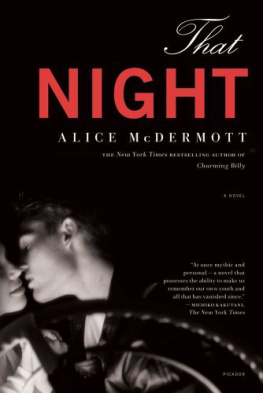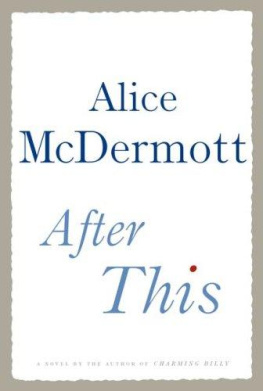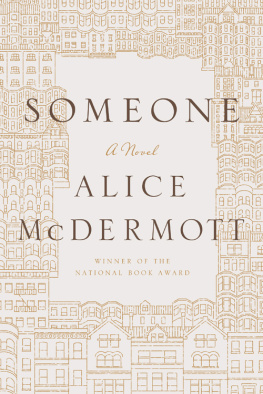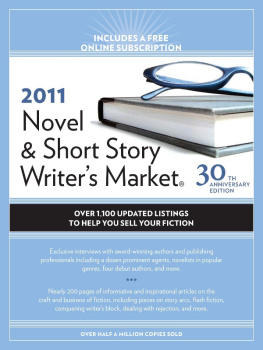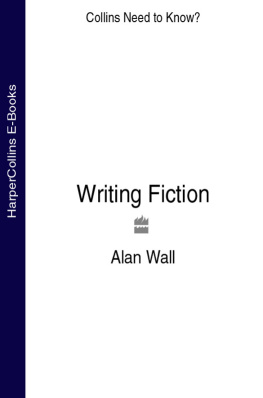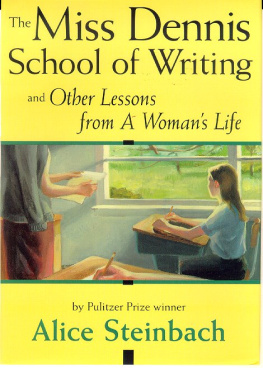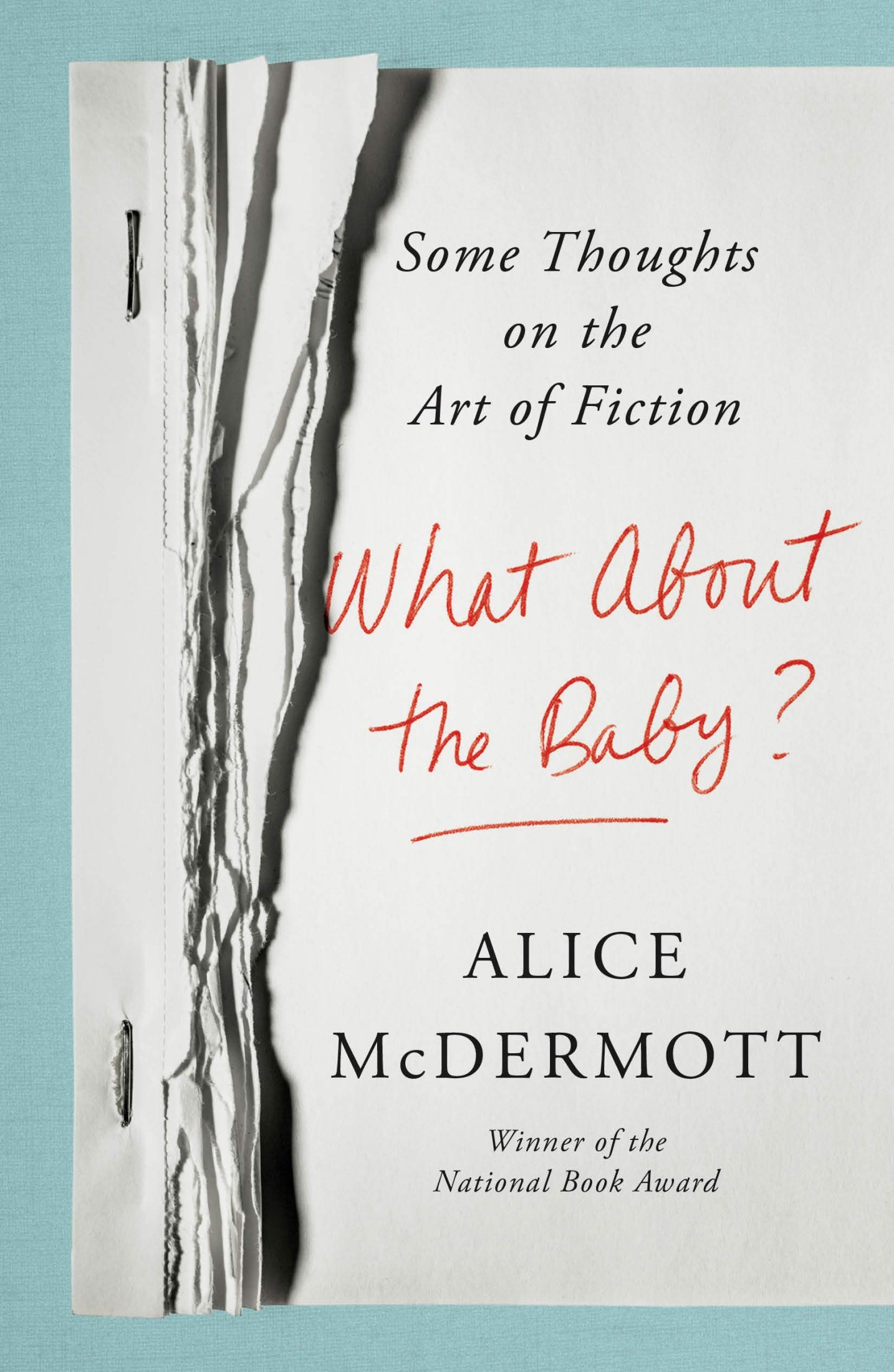
The author and publisher have provided this e-book to you for your personal use only. You may not make this e-book publicly available in any way. Copyright infringement is against the law. If you believe the copy of this e-book you are reading infringes on the authors copyright, please notify the publisher at: us.macmillanusa.com/piracy.
Surely we do better to acknowledge that literature, like language, is seldom simply but always also about itself.
JOHN BARTH, The Title of This Book
A lice McDermott and I have taught together at the Sewanee Writers Conference so many times that weve become the workshop equivalent of an old married couple. We speak in the private code of the long familiar. During class, if she says, Tell them about that thing, I know what thing she means. When I move my hand half an inch toward her on the tabletop, she knows its time to move on to the next story. And when she purses her lips and makes a noise, audible only to me, that sounds like the last flight of a disappointed mosquito, I know Ive said something stupid. I stop talking and look at her and say, What?
She says, Well, before suggesting, in the politest possible terms, that what I just said, while not exactly stupid, is perhaps not all that bright. She suggests an alternative. She is never wrong.
I look at the class and say, What she said.
If every story has an ideal narrative line, a Platonic yellow brick road that leads to the one place where it is meant to go, the problem for the writer is that a story can go to an infinite number of other places, and the shape of that infinity changes every time the writer chooses a word. Somebody cuts off your character in traffic. My thesaurus has fifty-one words for angry. Pick one. The stars rearrange themselves in the sky. Alice is a genius at peering into that cacophony of possibility and seeing the ideal line.
Say an orthopedic appliance salesman from St. Louis named Steve submits a story to our workshop about an orthopedic appliance salesman from East St. Louis named Bill. Bills company is losing its artificial-knee market share to a Chinese conglomerate; his wife has begun taking yoga classes; they fight about the pants; he stops at McDonalds to get coffee and remembers the toy train set the two of them put together one Christmas for their now estranged son; Bill resolves to dig the train out of the garage and make it run again.
Steve reads a page from his story aloud and looks up expectantly. Alice asks for comments. A woman asks, Why only knees? Maybe Bill could sell hips, too? The retired army guy speculates about what is wrong with the train. The woman from New York wonders if its racist that the knees putting Bill out of business were made in China.
Knees, Alice says. Titanium. Not titanium. American. Chinese. Who cares? It doesnt matter. Bill could be selling dynamite to coyotes. Whats the story? I have no idea what shes talking about, only that she has begun speaking in italics. I help her stare down the room. Nobody answers.
What about the clairvoyant sword swallower? Alice asks.
Clairvoyant sword swallower? I look down at my manuscript. What clairvoyant sword swallower?
Page eleven, Alice says. Sure enough, on page eleven, halfway down, a clairvoyant sword swallower materializes in a haze of coffee steam. She reads palms in a storefront in a dingy strip mall across the highway from McDonalds. Every morning she watches the sad guy drinking coffee. Because shes clairvoyant, she knows about the knees and the wife and the yoga and the pants and the train. She knows that today Bill will drive over and ask what happened to the model-train store that used to be there. Shell read his palm, but she already knows that the Chinese knees will cost him his job, that his wife will pack up her yoga pants and move out, that she gave the toy train to Goodwill when their son went away to college. He will stare at the swords hanging on the wall but be too shy to ask.
Alice leans forward. The sword-swallowing clairvoyant will know all this, she says, but guess what? She. Wont. Tell. Him. A. Thing. She taps the manuscript again. And that, she says, is the story.
Everyone in the class is scribbling furiously. Underlining. Steve is about to weep with joy. Oh, thank you, Alice, he says. Thank you so much. Turns out his grandmother was a clairvoyant sword swallower. Sword swallowing is how she saved enough money to sneak her children out of the Old Country. Clairvoyance is how they made it through the mines and the wire and the searchlights and over the wall. In America she worked the boardwalk seven days a week. Sent everybody to college. Died before Steve was born. Swallowed one sword too many. She knew it was coming. Steve says, I never really wanted to write about artificial knees, but I thought knees were all I knew. But now, he sayshe takes a minute to compose himselfnow I know the story.
Im still staring at my copy of the manuscript, wondering how the hell I missed a clairvoyant sword swallower.
Alice turns to me and smiles, asks, Do you want to add anything?
I smile back. Right now Im the luckiest man on the mountain. Im sitting at a table with Alice McDermott.
Nope, I say. Were good.
O n June 17, 2001, three New York City firemen were killed while fighting a Sunday afternoon fire in a hardware store in Astoria, Queens. Apparently, an illegally stored propane tank caused the explosion that toppled a brick wall onto two of the men and dropped the third through the first floor and into the basement, where he signaled for help but could not be reached before his oxygen ran out.
All three men were middle-aged Irish Catholics, longtime members of the fire department. One had been cited for bravery so often that the members of his company called any dangerous and heroic act performed by anyone a Harry Fordism. His comrades placed in his coffin a can of beer, a stuffed bear in a Yankees T-shirt, and the New York Times crossword puzzle he had left unfinished when he responded to the alarm. Another was a big, cheerful guy with a remarkable sense of humor and a way with wordsa teacher and mentor to young firemen. The third was to leave for Ireland the next day for a four-week vacation with his wife and two small children.
The three men had eight children among them. Each man worked a second job to supplement his fire department salary.
Had the hardware store been open, as it usually was on Sundays, chances are good that the fire would never have started. Investigators later determined that its initial cause was some gasoline spilled under a delivery door by two neighborhood kids playing in the deserted backyard. When the gasoline hit the basement water heater, the fire began. When the fire reached the propane tank, the deadly explosion occurred.
But the owner of the store had impulsively decided to close that Sunday because it was Fathers Day.
I was visiting Long Island at the time and like many other New Yorkers had this account provided to me by the New York Daily News: three days of front-page stories filled with the sad, ironic, heroic details, as well as the familiar photographsofficial fire department portraits and grinning photos of the men among their children, and then the orderly rows of firefighters outside the various churches, the flag-draped coffins on the fire trucks, the sobbing eight-year-old clutching his fathers helmet.


